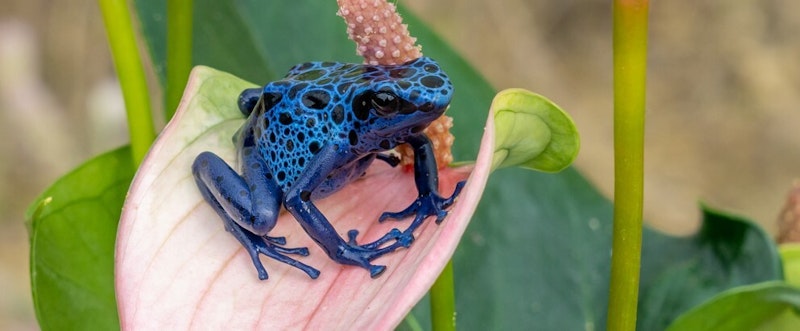Study Notes
GCSE Geography | Adapting to Tropical Rainforests (Tropical Rainforests 2)
- Level:
- GCSE
- Board:
- AQA, OCR
Last updated 17 Oct 2024
Tropical rainforests are home to over half of the world's animals species, and more than two-thirds of global plant species - these species make various adaptations that enable them to thrive in the hot and humid conditions.
How do plants adapt to the conditions in tropical rainforests?
Leaves - large surface areas to maximise photosynthesis, which is also helped by the flexible bases that enable leaves to turn to face the sun. Most leaves have waxy surfaces and drip tips, this allows the water to drip off the leaves quickly so they do not get waterlogged and rot.
Smooth branches and trunks - the smooth bark enables water to flow down to the ground easily.
Buttress roots - many trees grow to 40-50m high to reach the sunlight so they need to be anchored well. Buttress roots have massive ridges above the ground that support the base of the tree and help transport water from the soil.
Lianas - these are woody vines or creepers that are rooted to the ground but twist around tree trunks to reach sunlight at the top. They can also hang down from branches so can be used by animals to swing between trees.
Epiphytes - these are plants that sit on branches in the canopy to get maximum sunlight, and they get their nutrients from water and air instead of soil.

How do animals adapt to the conditions in tropical rainforests?
Parrots and toucans - brightly coloured feathers to attract mates, big strong razor-like beaks to crack open nuts, and long sharp claws to grip swaying branches.
Poison arrow frogs - their bright colours warn predators that they are highly poisonous so should be left alone (indigenous tribes people often use this poison at the end of their arrows when they are hunting).
Sloths - long hooked claws to enable them to grip onto and hang from branches, moss growing in their fur helps to camouflage them, and they move incredibly slowly to avoid being spotted by predators.
Monkeys - many species of monkey have prehensile tails - this means they can use them to grip things and for balance.

You might also like

Unsustainable growth degrades Asia's land
8th October 2015
Protection for endangered species
29th October 2017
Amazonian national park set to be extended
24th February 2018
Past extinctions inform scientists about what's to come for our mammals.
7th September 2020

Geography in the News: Is there anything green about plastic grass?
10th August 2022